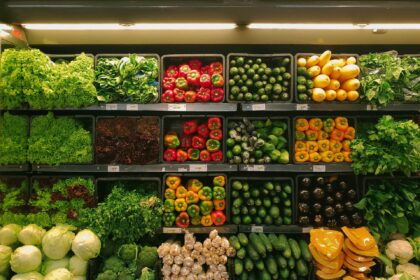While pursuing my Masters in Law, I had a subject called Globalization. I was intrigued by how the world is getting closer day by day. Until a few decades ago, to get a foreign product, we had to wait for someone to travel to a particular country, which in itself was a rare feat. The situation has changed 360 degrees today. Every super mart, even in the nook and corners of India, has multiple products manufactured abroad. Apart from the non-consumable items like cosmetics, electronic goods, clothes etc, India has plethora of options when it comes to foreign processed food items. It is so easy to find any variety of cheese, snacks, frozen food items etc. which were never available in India. India has emerged as one of the most lucrative markets for foreign companies considering the population here and most importantly the changing food habits of people in India. Apart from the non-healthyimported consumable goods, Indian markets are filled with the so called “healthy” options as well.
It is beyond my imagination, how could a product which is otherwise perishable and for the sake of extending its life span has been bombarded with preservatives, be healthy in the first place? It is a proven fact that apart from some Asian countries, most western countries consume processed foods. Western countries are not agrarian economies. They eat manufactured and processed foods which undergo extreme chemical reaction and which have the potential of damaging the human body. Foods high in sodium, white flour, preservatives etc, even if labeled as healthy, cannot be fit for human consumption in the long run.
The impact of colonization is evident on the Indian audiences even today, after 75 years of our independence. We are always attracted towards foreign goods and tend to underestimate our country on many levels. The food industry is also not an exception to this obsession of foreign goods. The diversity we have in our country, when it comes to food, different types of grains, varying styles of cooking is unmatched. The traditional Indian food habits are extremely scientific. Our shastras teach us to choose and have food in a peculiar manner essentially based on the weather of a particular region. Our books advise us to eat food at a particular time, so that it gets well digested. Further, our food choices should be based on our body types and doshas (as mentioned in old Indian Ayurvedic texts). The problem is, that the have become so modern today, that we have chosen to absolutely ignore the potential of our texts. The price we have to pay for modernization is often too heavy and unfortunately we haven’t really acknowledged it yet.
I am listing 5 Superfoods from different parts of India, which can give foreign processed foods a run for their money.
- Sattu: Sattu is a protein-rich flour made from powdered chana (Bengal gram) or other pulses and cereals. It is quite popular in many parts of India such as Jharkhand, Bihar, Punjab, Uttarakhand and UP. Many a times, Sattu is referred to as ‘Poor man’s protein’. t is high in nutrients and is often called the powerhouse of energy.
- Moringa: Moringa oleifera is a plant native to northern India that can also grow in other tropical and sub-tropical places, like Asia and Africa. Traditional medicine has used the leaves, flowers, seeds, and roots of this plant for centuries.Moringa has many important vitamins and minerals. The leaves have about as much potassium as a banana, and about the same amount of Vitamin C as an orange. It also has calcium, protien, iron, and amino acids, which help your body heal and build muscle. It’s also packed with antioxidants, substances that can protect cells from damage and may boost your immune system.
- Amla or Indian Gooseberry: Amla is a powerhouse of antioxidants and ancient medicine endorses the consumption of this fruit to prevent the formation of cancer cells. It can be consumed raw, in the form of juice, churna, candy, pickles or supplements.
If you are suffering from severe hair loss turn to Indian gooseberry, right away. Massaging the scalp with amla oil strengthens the follicles, provides luster while vitamin C prevents premature greying.The healing and medicinal properties of amla are innumerable as it is loaded with vitamin C, calcium, iron, phosphorous, carotene, vitamin B, protein and fiber.
- Makhana or Fox Nuts: Makhana has been widely used in traditional oriental medicine to cure various diseases, including kidney problems, chronic diarrhoea, and hypofunction of the spleen. Moreover, it is fast emerging as a superfood globally owing to its rich medicinal values and mineral contents. Makhanas are rich in nutrients and are a highly potent source of manganese, potassium, magnesium, thiamine, protein, and phosphorus. Roasted makhanas are an excellent teatime snack and a perfect tiffin option for kids. In India, people also make dishes such as kheer, curry, raita, and cutlets using makhana
Kokum: Kokum is a powerhouse of nutrients such as vitamin A, vitamin C, vitamin B3, and minerals such as iron, calcium, potassium, manganese, and zinc. It also contains a good amount of folic acid, ascorbic acid, hydroxycitric acid, acetic acid and fibre.Kokum juice is great for the skin since it has anti-inflammatory and antioxidative properties. Kokum is known to be a marvellous cardiotonic which reduces the levels of triglyceride and brings down the risks which are linked to coronary heart disease. It also helps protect the liver, regulates bloos sugar, helps reduce inflammation, prevents cancer and reduce anxiety.









